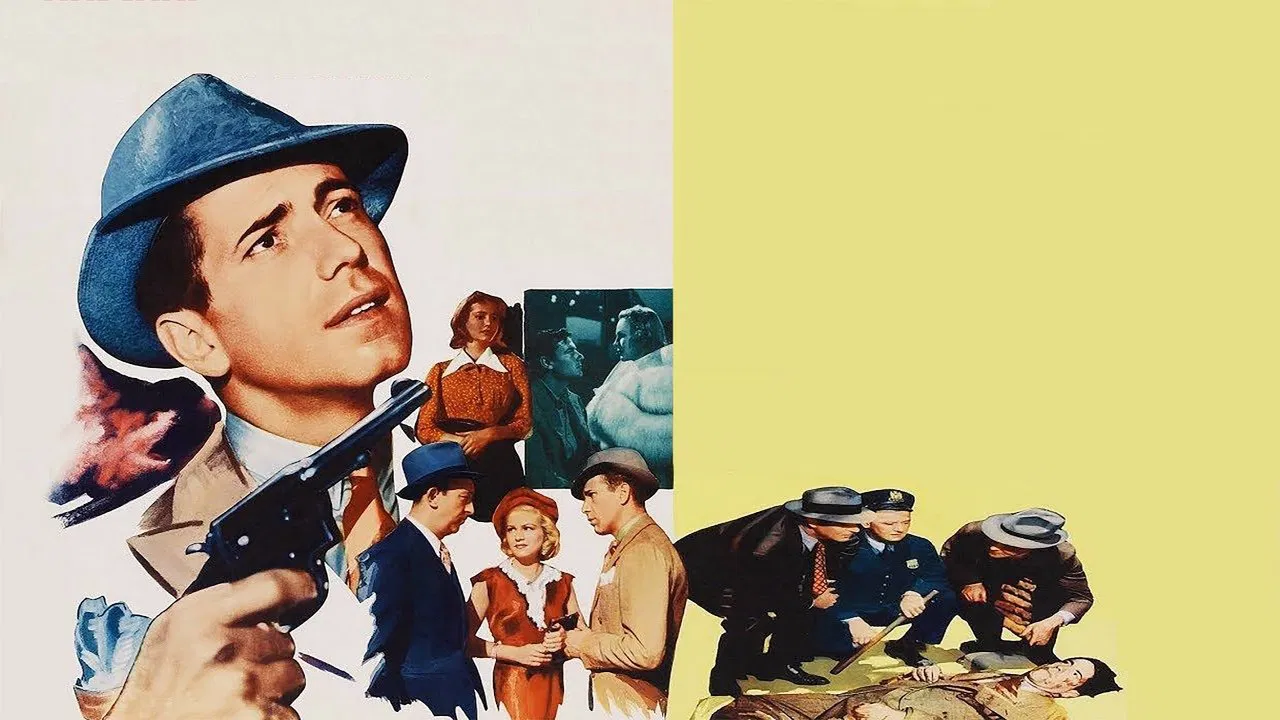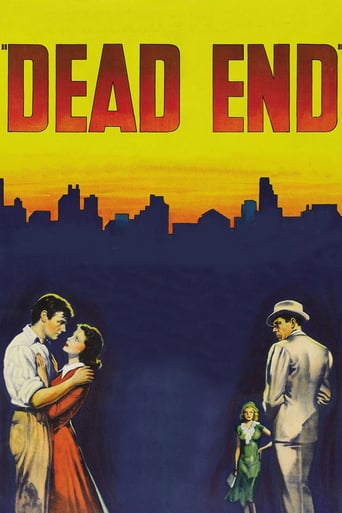

"Dead End" was one of the many movies in the 1930s focusing on class issues. Set on a street that extends to the river, it's where rich and poor meet. The plot is every gritty thing that you can imagine (at least as was acceptable in 1937). It's impossible to see how the rich have holder themselves up in a building where they can ignore the hoi polloi, all of whom have to figure out how to fend off danger.The most recognizable cast member of is course Humphrey Bogart. He plays a supporting role, but he's just as tough as in his most famous ones. Aside from the Dead End Kids, another cast member is Sylvia Sidney, known to modern audiences as the grandmother in "Mars Attacks!".But anyway, one can see a similarity to movies like "City of God" here. The movie makes clear that reality is right around the corner, especially when it involves the differences between rich and poor. Even though they filmed it on a set, it looks realistic; I wonder how much longer the New York docks looked like this.In conclusion, I recommend it.
... View MoreDead End's story is a very serious-minded drama depicting the antagonistic "culture clash" that prevails on a daily basis between the "haves" and the "have nots".Set in NYC's Lower East Side where the streets of the city all come to a "dead end" halt at the edge of the East River - This tale of troubled lives introduces the viewer to the conflicting attitudes of the punks, the gangsters, and of those who long to rise above the oppressiveness of the slums (but they just can't seem to find a reasonable way out of this stifling jungle).Filmed in stark b&w - This straight-faced, 1937 social commentary was directed by William Wyler (adapted from the screenplay penned by Lillian Hellman).
... View MoreBrilliant adaptation of a hit Broadway play about life in the slums of New York during the Great Depression. A gangster on the run from the law returns to the neighborhood he grew up in to plot his next move. Add to that a little romance and a gang of street kids getting into trouble and you've got a first-rate Warner Bros. urban drama picture (only this wasn't made by Warners). Humphrey Bogart plays the gangster character 'Baby Face' Martin. In some ways it was a very familiar role to many others he'd played up to this point, but this one was a bit more layered and gave him a chance to flex his acting muscles some. Solid turns from Joel McCrea, Wendy Barrie, Claire Trevor, and Marjorie Main. Allen Jenkins is always fun to watch. Next to Bogart, I'd have to say the standout is the lovely Sylvia Sidney, one of my favorite actresses from this period. She had some of the most expressive eyes in the business.Among other things, the film's notable for being the first screen appearance of the Dead End Kids, who would go on to appear in several WB gangster pictures (in basically the same roles as this) before starring in a few series of their own under different names, my favorite of which was the Bowery Boys. It's interesting to see them here looking and acting much more like roughneck teenagers than later where they were clearly adults behaving like overgrown kids. Directed by William Wyler, this is a "message movie" from a time when those types of movies actually felt earnest and not phony or preachy. Yes it's pretty much a filmed stage play, which was very common in the 1930s, but the great cast, excellent sets, and Gregg Toland's beautiful photography goes a long way to bringing it all to life. Not one you'll want to pass up if you're a fan of the stars or the period.
... View MoreCinema has always had an uneasy relationship with the theatre. By their nature stage plays tend to have very long scenes and base everything around dialogue, and there is something in the power of having real life players there in front of you that makes this workable. But there is also something about the very specific visual form of cinema that makes straight adaptations of stage plays potentially very boring.The way in which this can be overcome, other than completely restructuring the source text, is by ensuring that the picture keeps moving and keeps storytelling on a visual level. You see, perhaps the most important difference between stage and screen, is that in the theatre every audience member sees things from a slightly different angle or distance – there is no universal perspective, and theatre directors have to ensure that everything is clear whichever seat it's seen from. But in the pictures everyone sees the exact same image at any given moment, and a screen director must find the best camera placements and shot arrangements. Fortunately for Dead End, this screen director William Wyler was among the best and most inventive users of space on screen. For starters, look at how the shots of the rich folks contrast with those of the poor ones. In the former, the camera mostly keeps an aloof distance, and everything is picked out in crisp white. In the latter, the camera is closer to the action, and the image is filled with mottled shades of grey.The other very important thing in adapting stage plays to screen, is to ensure the performances are presented as well as possible, in order to give cinema audiences a taste of that same atmosphere and presence they would feel in front of a stage. Wyler also happens to be especially good at this. In particular he is bold enough to focus us on just one facet of a performance, sometimes keeping a character with their back to the camera and not showing us their face, forcing us to focus more on their posture, or the reaction of the opposite person. He also keeps the entrances of characters in keeping with their nature – for example having Humphrey Bogart smoothly slide into the frame, or craftily appear in the background as other figures move aside.And the performances pay off big time. This was still a period in which an actor like Bogart was unlikely to be anything but a villain, but his appearance here surely raised his profile considerably and put him one step closer to those heroic leads. He adds some incredibly subtle yet effective touches – for example, when Joel McCrea gives him the cigarette, look at how he pauses before grudgingly lowering his head to accept the lighted match, as if this tiny stretch is some extreme display of generosity on Bogart's part. Joel McCrea is one of those actors (like, say, Gary Cooper or Van Heflin) who doesn't look like he ought to be a good actor – he looks like he ought to be an absolute hunk of wood – but he isn't. This is probably his finest performance. It's also the best I have seen from Sylvia Sidney. And of course there are those kids, every one of them a character.The strange thing to consider about the acting in Dead End, is that all the performances are essentially one-dimensional – but in the best possible sense. Bogart is continually a mean and moody presence, moving and speaking slowly, submerging his feelings under a veneer of hard-hearted masculinity. In so doing he fulfils his character's placement as the symbolic archetypal gangster figure. Sylvia Sidney is the eternal independent working class lass, while McCrea is the honest, level-headed working man, and even when he turns to violence it seems not so much character development but merely the natural result of his principled persona in extreme circumstances. Claire Trevor, in her portrayal of the prostitute-moll, has the very opposite tone to the measured performances of Bogart and McCrea, all venom and fragile emotion. Of such things many a Best Supporting Actress nomination is made.The odds were perhaps stacked in the filmmakers' favour with Dead End, it being a very engaging and punchy play that lends itself well to the cinematic medium. Of particular appeal is the way it begins as a kind of plot-less social study, but gradually a story emerges as the character's lives become interwoven. Still, it is the superb efforts of Wyler and his cast that really bring this one to life.
... View More